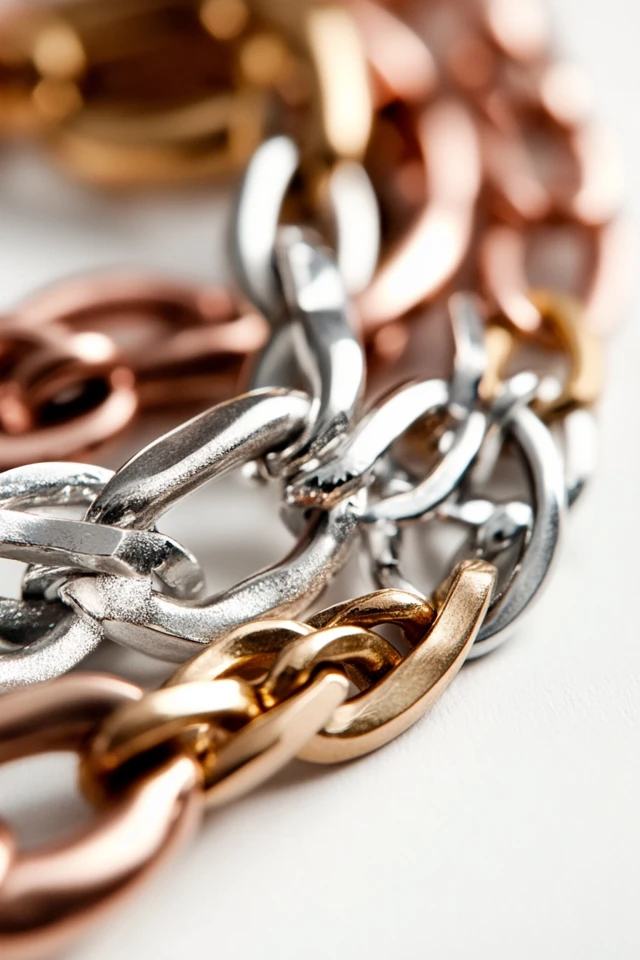Gone are the days when mixing metals in your jewelry was considered a fashion faux pas. Today, pairing gold, silver, rose gold, and other metallic tones has become a chic and modern styling technique that allows for endless creativity and personalization. Whether you’re stacking rings, layering necklaces, or pairing bracelets, mixed-metal jewelry creates depth and visual interest that elevates your overall look.
But how do you mix metals without it looking haphazard? In this guide, I’ll share the art and psychology of mixing metals, tips for creating cohesive jewelry combinations, and outfit ideas that incorporate this versatile trend seamlessly.
About the Author and My Trend Boutique
Why Mixing Metals Works
Mixing metals is more than just a trend—it’s a way to express individuality and break free from traditional styling rules. Here’s why it works:
- Visual Interest: Combining different tones adds dimension and texture, making your jewelry more dynamic.
- Versatility: Mixed metals can tie together different colors and styles, making them easy to pair with any outfit.
- Modern Aesthetic: The contrast of warm (gold) and cool (silver) metals feels fresh, edgy, and contemporary.
- Personal Expression: Mixing metals allows you to showcase your unique style and preferences, breaking away from uniformity.
Anecdote: I remember hesitating to mix my favorite gold necklace with a silver bracelet at first, fearing it would clash. When I tried it, though, the combination added a trendy edge to my look—and I received more compliments than ever!
The Psychology of Mixed Metals
Jewelry influences not just your outfit but also your mood and how you’re perceived. Mixed metals are no exception:
- Confidence Booster: Breaking traditional rules can make you feel bold and empowered.
- Balance of Warm and Cool Tones: Gold conveys warmth and energy, while silver evokes calm and sophistication. Together, they create harmony.
- Versatile Appeal: Mixing metals signals creativity and adaptability, making you appear effortlessly stylish.
Picture Gallery
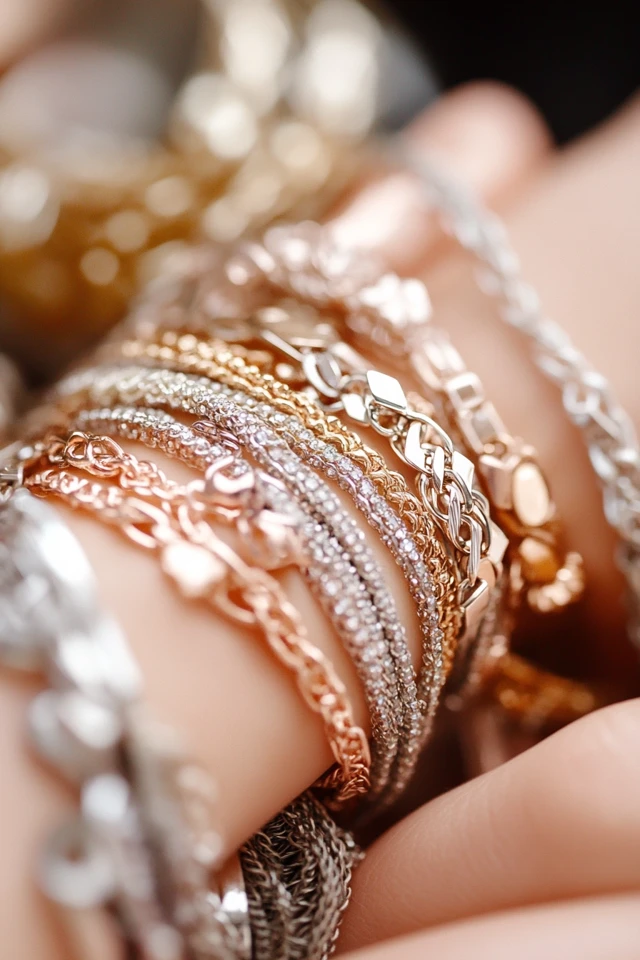
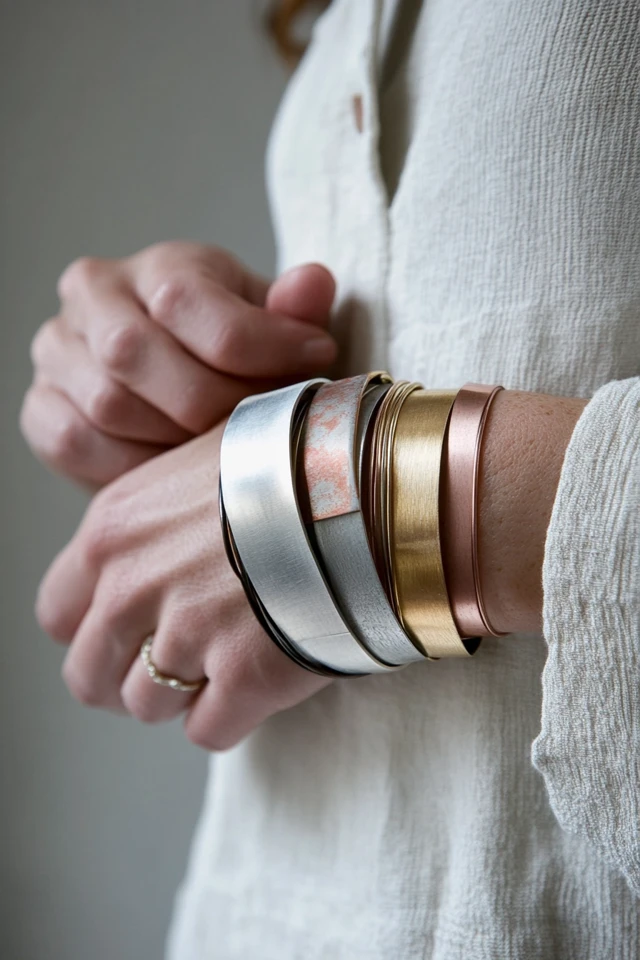
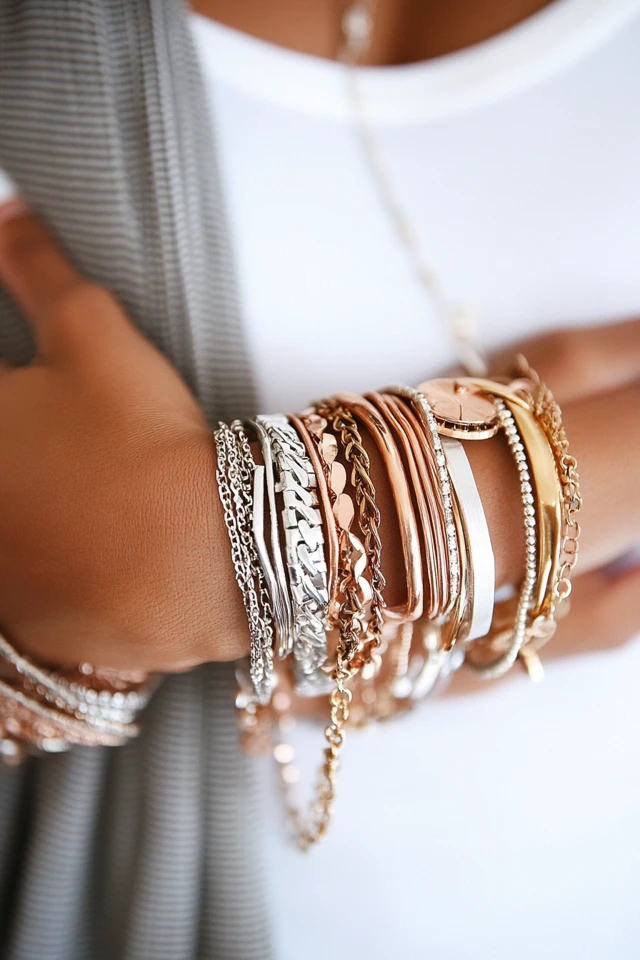
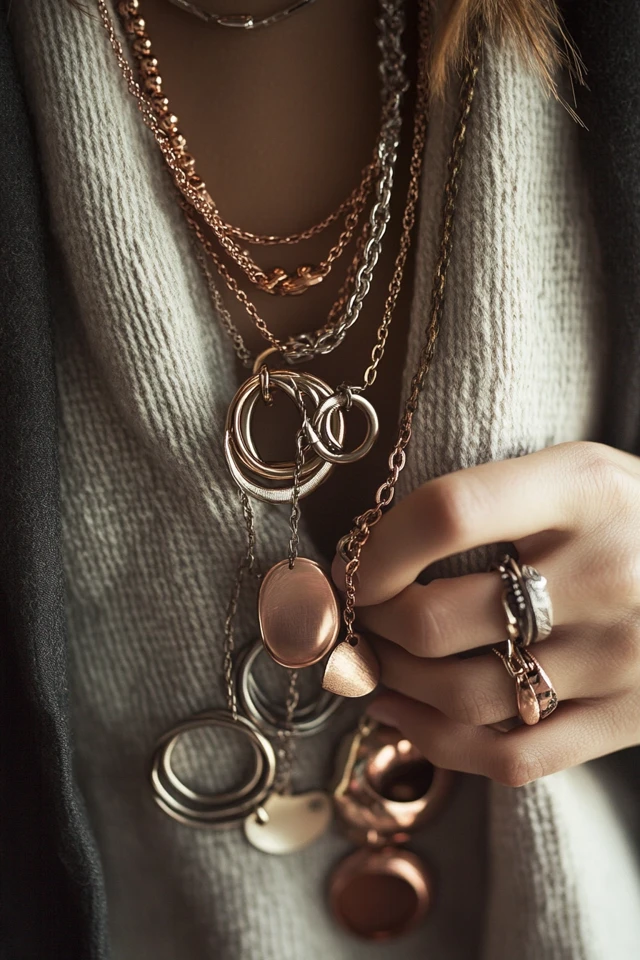
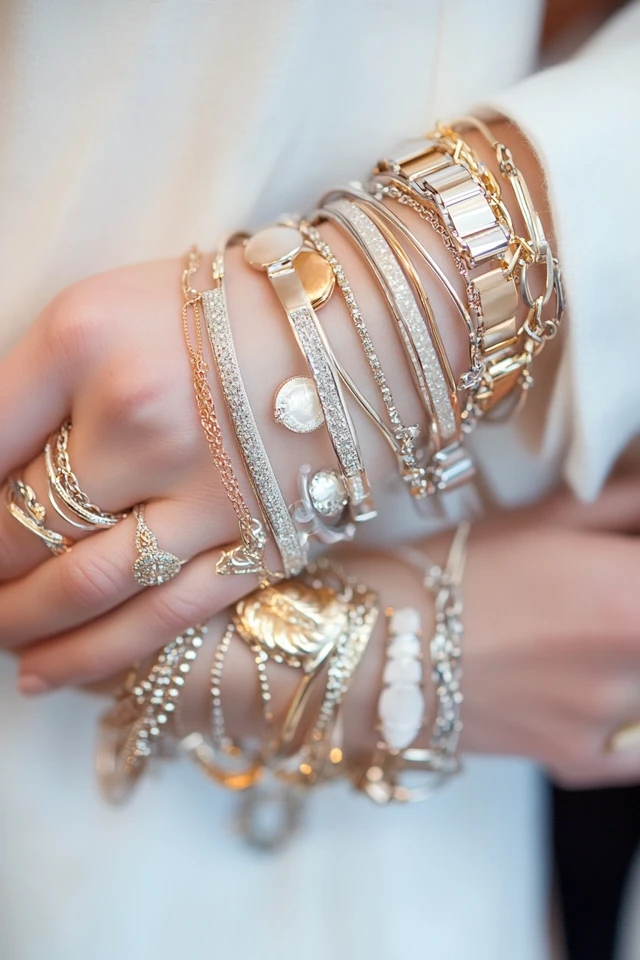
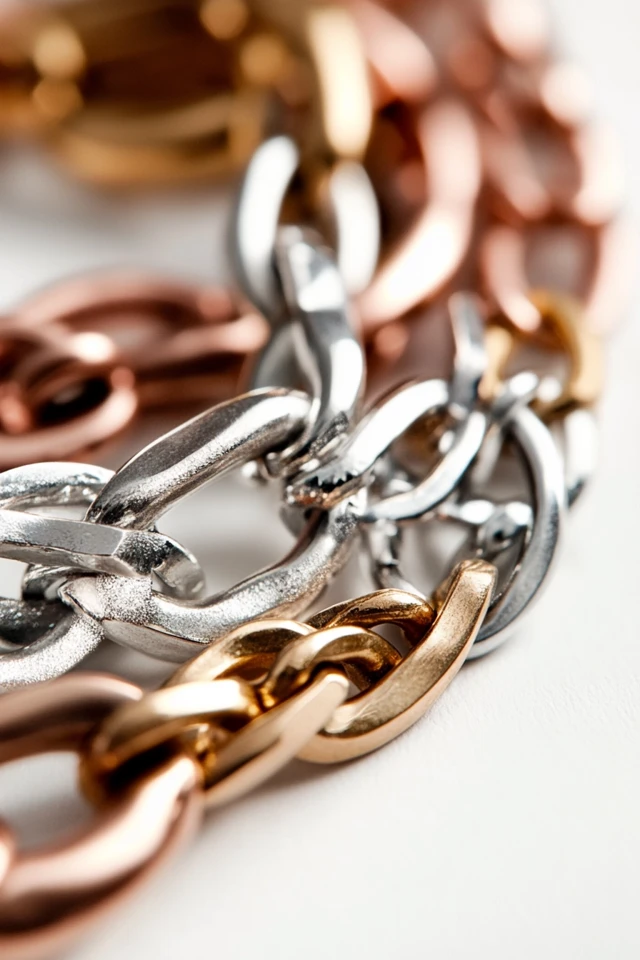
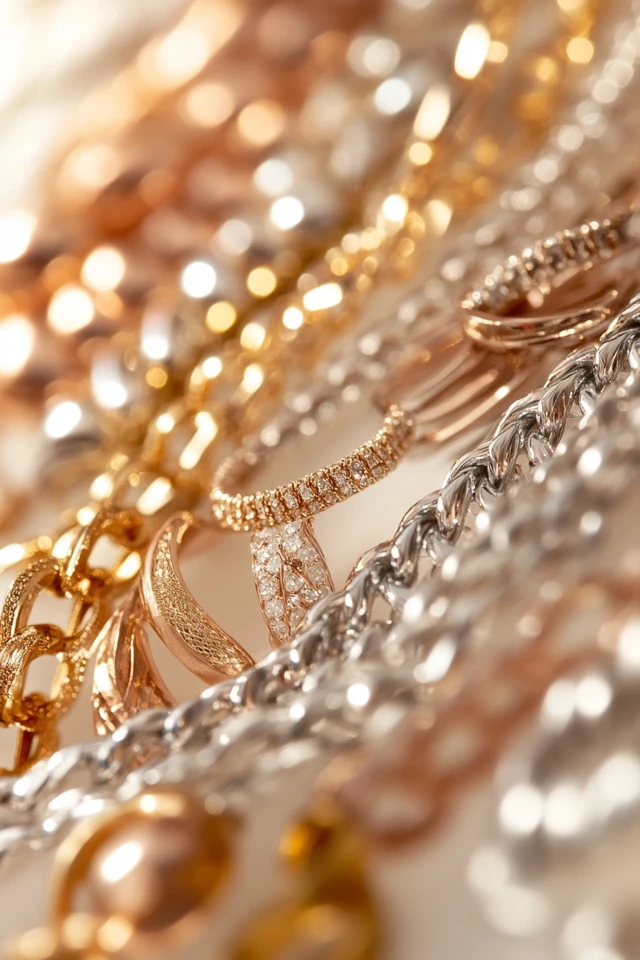
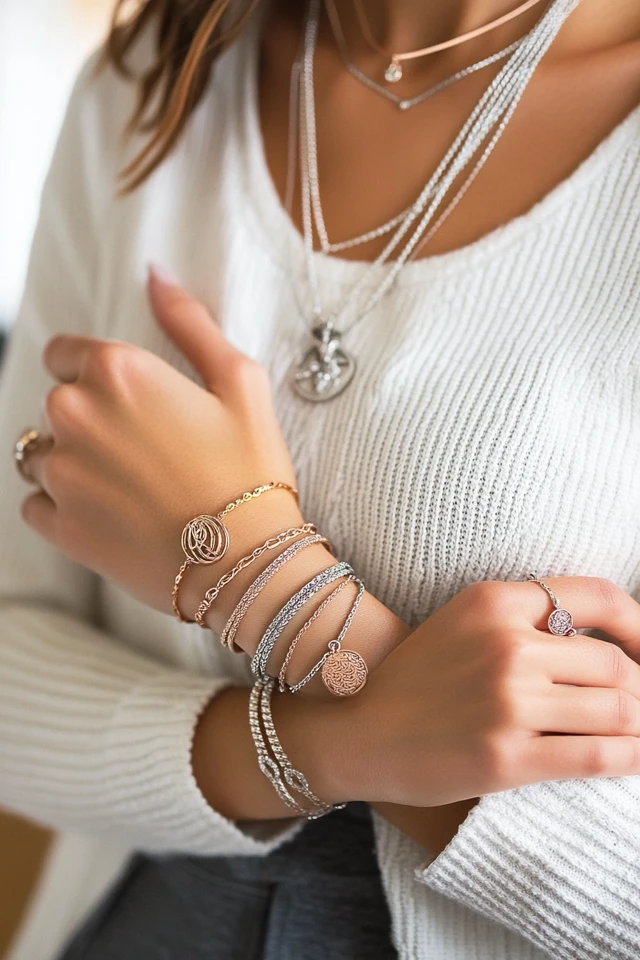
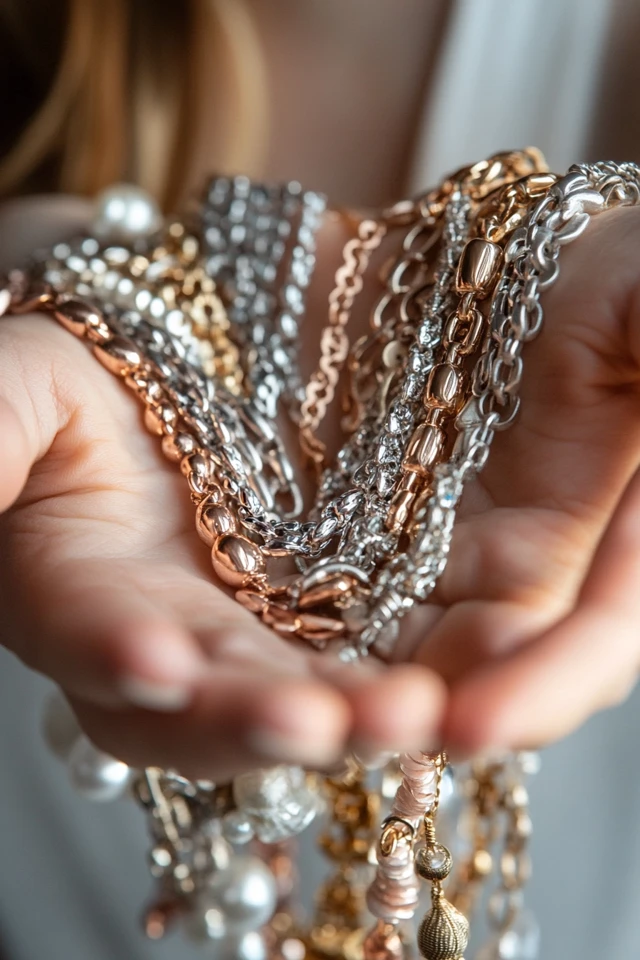
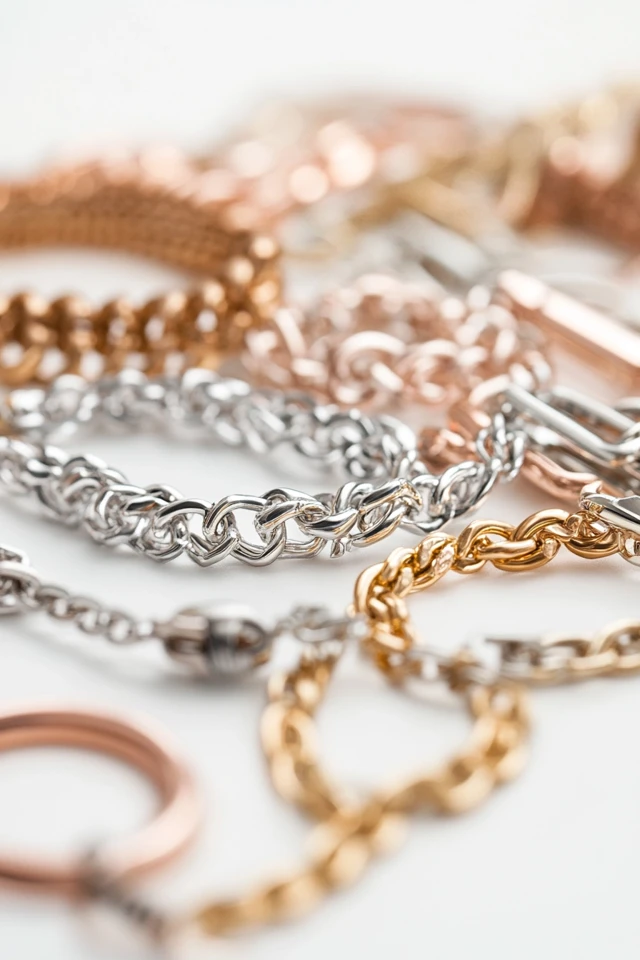
How to Master the Art of Mixing Metals
1. Start with a Statement Piece
Begin by choosing one bold, mixed-metal piece as your focal point, such as a necklace, cuff bracelet, or pair of earrings.
- Example: A gold and silver pendant necklace or a two-tone watch.
- Why It Works: A statement piece sets the tone for your look and makes it easier to coordinate other metals around it.
2. Keep the Ratios Balanced
Maintain a balanced mix of metals for a cohesive look.
- Tip: Use the 2:1 ratio—choose two pieces in one metal (e.g., gold) and one in another (e.g., silver).
- Why It Works: This creates harmony without overwhelming the overall aesthetic.
3. Use Spacers for Separation
To avoid a jumbled look, use neutral elements to separate metals.
- Example: Add beads, leather, or gemstones between metal layers to create definition.
- Pro Tip: A leather strap or a pearl choker can act as a stylish divider.
4. Layer Necklaces with Intention
Layering necklaces is one of the easiest ways to mix metals.
- How-To: Pair a gold chain with a silver pendant or layer rose gold, silver, and yellow gold chains of varying lengths.
- Pro Tip: Let the metals overlap slightly for a natural, blended look.
5. Stack Rings and Bracelets
Mixed-metal stacks are both trendy and versatile.
- Rings: Alternate gold, silver, and rose gold bands on the same finger, or spread them across multiple fingers.
- Bracelets: Stack metallic bangles or cuffs in different tones for a bold, eclectic vibe.
- Pro Tip: Add a pop of texture with hammered or brushed metal finishes.
6. Incorporate a Multimetal Piece
Ease into the trend by starting with jewelry that already combines metals.
- Examples: Two-tone watches, mixed-metal earrings, or necklaces with gold and silver accents.
- Why It Works: These pieces act as a bridge, tying together the rest of your jewelry seamlessly.
7. Play with Textures and Finishes
Add depth by mixing polished, matte, and hammered metals.
- Example: A shiny silver necklace paired with a brushed gold cuff.
- Why It Works: Contrasting finishes create visual intrigue and prevent the look from feeling flat.
Outfit Ideas to Complement Mixed Metals
1. Everyday Casual
- Outfit Idea: A white tee, distressed jeans, and a gold-and-silver layered necklace.
- Why It Works: The neutral outfit lets the mixed metals take center stage.
2. Office Chic
- Outfit Idea: A tailored blazer, silk blouse, and a two-tone watch paired with stacked rings.
- Why It Works: Mixed metals add polish and modernity to professional attire.
3. Evening Glam
- Outfit Idea: A sleek black dress, chandelier earrings in mixed metals, and a metallic clutch.
- Why It Works: The metals add drama and sophistication to an evening ensemble.
4. Weekend Brunch
- Outfit Idea: A flowy midi dress, layered necklaces, and stacked bangles in gold and silver.
- Why It Works: Mixed metals complement the casual elegance of a daytime outfit.
Current Trends in Mixed-Metal Jewelry
- Chunky Chains: Oversized gold-and-silver chain necklaces are a bold statement piece.
- Two-Tone Watches: Sleek and versatile, these are perfect for transitioning between day and night looks.
- Multicolor Hoops: Hoop earrings featuring gold, silver, and rose gold add a playful touch.
- Layered Medallions: Coin necklaces in mixed metals are a favorite for a bohemian-chic aesthetic.
- Metallic Fringe: Necklaces and earrings with mixed-metal fringe designs are edgy and glamorous.
Practical Tips for Mixing Metals
- Choose a Dominant Metal: Let one metal (gold, silver, or rose gold) take the lead while the others act as accents.
- Stick to Similar Tones: Warm metals (gold, rose gold) pair well together, while cool metals (silver, white gold) create a sleek, cohesive look.
- Match Metals to Your Skin Tone:
- Warm undertones: Gold and rose gold flatter best.
- Cool undertones: Silver and white gold are ideal.
- Neutral undertones: You can wear all metals equally well!
- Coordinate with Your Outfit: Pair metals that complement your clothing’s color palette for a polished appearance.
- Experiment Boldly: Mixing metals is about personal expression—don’t be afraid to break traditional rules and try unexpected combinations.
FAQs
1. Can I mix rose gold with yellow gold and silver?
Absolutely! Rose gold acts as a beautiful bridge between the warmth of yellow gold and the coolness of silver.
2. Is there a limit to how many metals I can mix?
There’s no hard limit, but stick to 2–3 metals for a balanced look. Too many can feel overwhelming.
3. Are mixed-metal jewelry pieces worth investing in?
Yes! Multimetal pieces are versatile and timeless, making them a smart addition to your collection.
4. Can I mix metals with gemstones?
Definitely! Gemstones add color and personality to your look while complementing mixed-metal combinations.
5. What’s the best way to transition into the mixed-metal trend?
Start small with a multimetal watch or ring, then gradually add layers or stacks to build your confidence.
Conclusion
Mixing metals in your jewelry is a creative way to showcase your style and embrace modern fashion trends. From layering necklaces to stacking rings, this technique offers endless possibilities for experimenting with textures, colors, and finishes.
Ready to break the rules and create your own mixed-metal masterpiece? Start with a statement piece, balance your ratios, and let your unique style shine. Share your favorite mixed-metal combinations in the comments below—we’d love to see how you make this trend your own!

